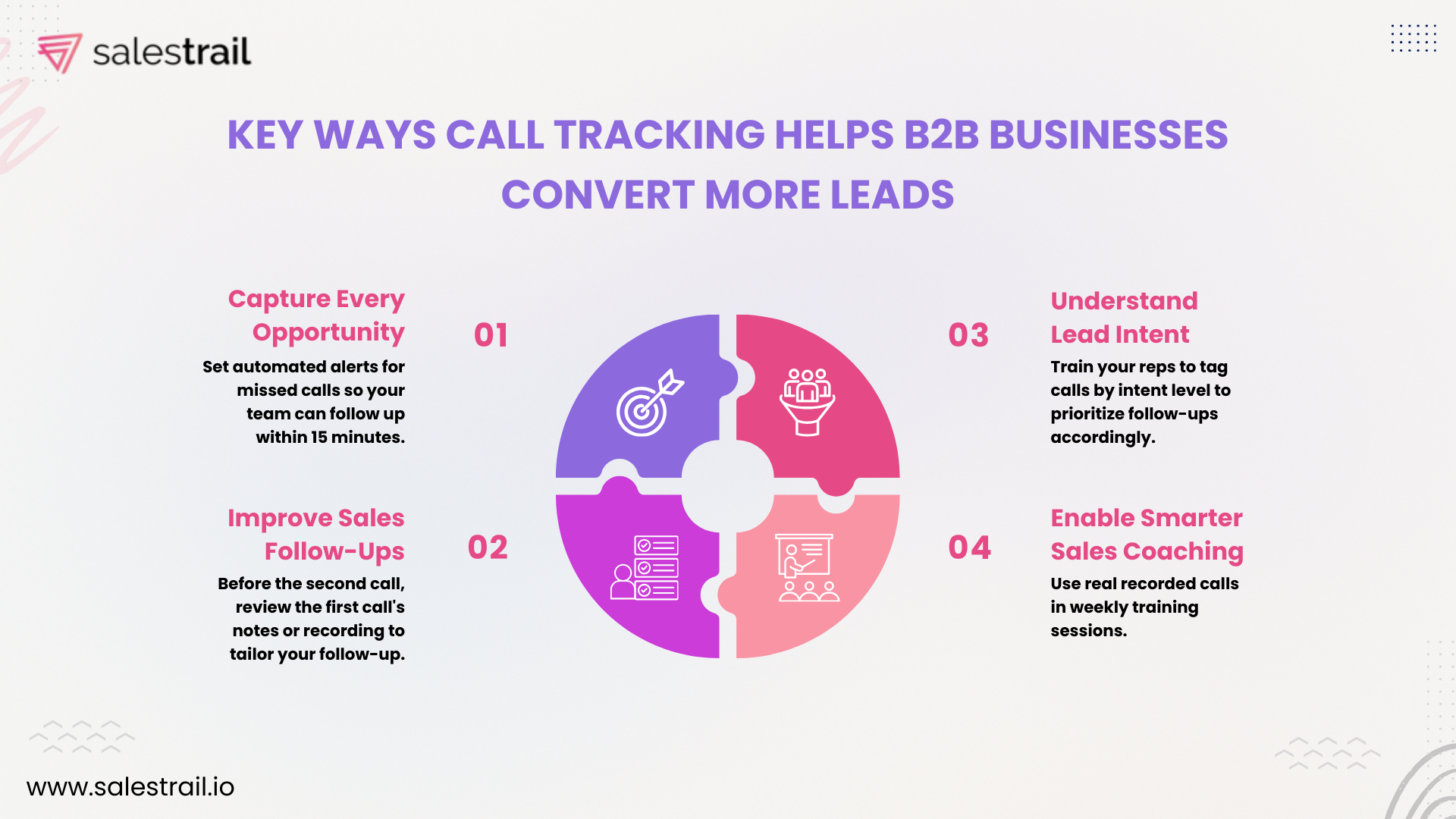
In B2B sales, it’s rarely the first touchpoint that closes the deal—it’s the conversation that follows. Whether you're offering software, consulting services, or industrial solutions, the path from lead to client depends heavily on how well your sales team communicates.
Amid emails, demos, and webinars, phone calls remain one of the most decisive points of contact. But what happens if those calls aren’t tracked, recorded, or analyzed? Opportunities are lost. Insights are missed. And conversions suffer.
That’s where call tracking comes in—not as a nice-to-have, but as a critical tool for conversion success.
Selling to businesses involves longer sales cycles, multiple stakeholders, and high-value contracts. A single lead could take weeks—or months—to convert, and often, dozens of touchpoints. In this scenario, visibility becomes everything.
Without knowing which calls are working, which leads are most engaged, and which reps are closing effectively, you’re making decisions in the dark. Call tracking provides the light.
While digital communication is important, voice conversations build trust faster. A well-handled call allows your rep to respond to questions, clarify doubts, tailor the pitch, and build rapport in a way that emails simply can't.
Example: A prospect who downloads your whitepaper might not reply to your follow-up email. But if your SDR calls them and gets them talking about their current challenges, you're one step closer to qualifying that lead—and converting them.
Phone calls are where the real intent surfaces—and where the real selling happens.
Call tracking software logs and records calls made to and from your team, whether through traditional mobile networks or platforms like WhatsApp. Tools like Salestrail offer:
The result is a complete picture of how your team communicates with leads—and how those conversations influence conversions.

Leads often call outside working hours or during peak campaign periods. Without tracking, those calls can go unanswered—or forgotten.
Example: Your Google Ads campaign drives 30 calls in one day. Without call tracking, you might only follow up on 18 of them. With call tracking, you’ll have a full call log with timestamps, caller ID, and missed call alerts—ensuring you respond to every single lead.
Tip: Set automated alerts for missed calls so your team can follow up within 15 minutes.
The key to conversion isn’t just making the first call—it’s following up at the right time with the right message. Call tracking gives your team access to the context of each call.
Tip: Before the second call, review the first call's notes or recording to tailor your follow-up. Mentioning a specific detail—like the lead’s pain point or a competitor they mentioned—builds instant credibility.
Not every lead is ready to buy, but call analytics can help you identify which ones are close. The questions they ask, the urgency in their voice, or how they react to pricing—all reveal intent.
Example: A lead who asks about onboarding timelines and contract length is signaling they're near the decision stage.
Tip: Train your reps to tag calls by intent level (e.g., “interested,” “evaluation,” “budget concern”) to prioritize follow-ups accordingly.
With call recordings, managers can identify strengths and weaknesses in real sales calls. You no longer have to rely on rep feedback—you hear exactly what happened.
Tip: Use real recorded calls in weekly training sessions. Play examples of successful objection handling or effective discovery questions to coach your team more effectively.
1. Integrate with your CRM: Automatically link call logs and recordings to lead records for a full communication history.
2. Track WhatsApp calls: Many B2B prospects now prefer WhatsApp for initial engagement—make sure you're not missing that data.
3. Tag and categorize calls: Use tags like “new lead,” “demo scheduled,” or “needs follow-up” to stay organized.
4. Monitor call duration and timing: Short calls might mean quick dismissals; long ones might signal deep engagement.
5. Review top-performing reps' calls: Identify what they’re doing differently and use those insights to coach the rest of the team.
In B2B sales, data alone doesn’t close deals—conversations do. But without visibility into those conversations, even the best marketing efforts and lead gen strategies can fall short.
Call tracking brings accountability, insight, and structure to your sales process. It ensures every lead is followed up, every call is captured, and every conversation is a step toward conversion. For modern B2B businesses, it’s not just about tracking calls—it’s about tracking progress, performance, and potential.
Salestrail helps B2B teams track and analyze mobile and WhatsApp calls in real-time—so no lead is lost, and every conversation is a chance to win.
Available as a mobile app on both Android and iOS, Salestrail makes call tracking easy and accessible—right from your phone.
👉 Visit www.salestrail.io to start turning calls into clients.
Your leads are calling. Are you listening?
These Stories on Sales Best Practices
Fredrikinkatu 33 A,
00120 Helsinki, Finland
Call :+358 40 768 3813
Email: support@liid.com
No Comments Yet
Let us know what you think